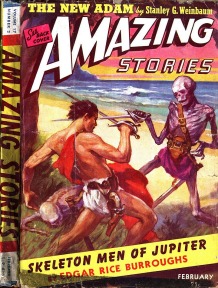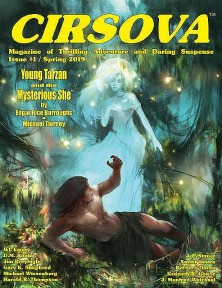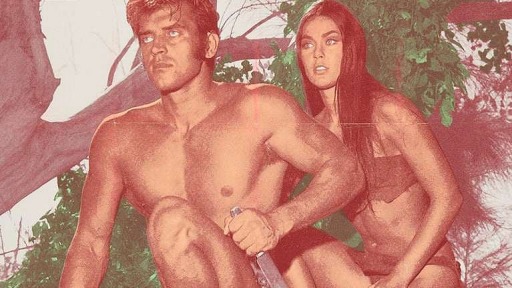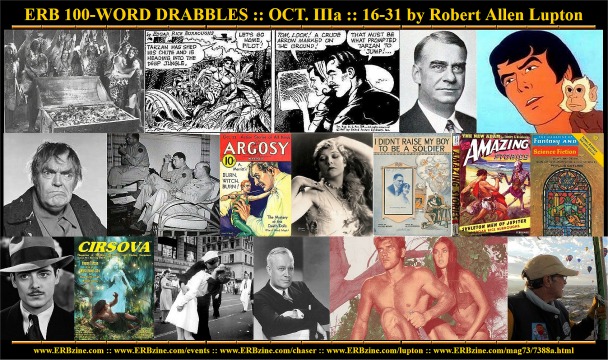
Official Edgar Rice Burroughs Tribute and Weekly Webzine Site Since 1996 ~ Over 15,000 Webpages in Archive Volume 7388a  |
ERB 100-Word Drabbles
OCTOBER III Edition :: Days 16-31
See Days 1-15 at ERBzine 7388
by Robert Allen Lupton
With Collations, Web Page Layout and ERBzine Illustrations and References by Bill Hillman
TARZAN THE TIGER
October 16: On this day in 1929, Edgar Rice Burroughs watched the first installment of the new Tarzan film serial, “Tarzan the Tiger,” starring Frank Merrill and Natalie Kingman. The serial was released in fifteen episodes, interestingly enough in both silent and talking versions. The film was considered a success in spite of the proximity of its release to the stock market crash. Burroughs wouldn’t have thought the film was too successful because he never received a cent in royalties. ‘Tarzan the Tiger’ was based on “Tarzan and the Jewels of Opar.”
Erbzine offers the final chapter and details about the serial and its production at: https://www.erbzine.com/mag5/0593.html
The drabble for today was inspired by the screen play for “Tarzan the Tiger.”
TARZAN THE TIGER
![]()
“Come to my temple and we will rule together.”
Jane pleaded with Tarzan, who was suffering with amnesia,
and didn’t know who she was.
He said, “Tarzan has no wife and no mate. He live
alone in jungle.”
La turned to Jane. “Like a lot of men, he’d rather
go camping than stay home and help with the housework.”
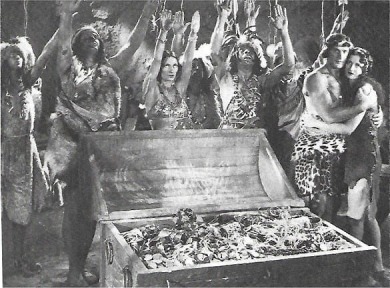
LONG LIVE THE QUEEN
October 17: On this day in 1967, the last John Celardo written and illustrated Tarzan daily comic strip story began. “Jungle Girl: Queen of the Gorillas” ran for seventy-two episodes and ended on December 9, 1967. Russ Manning took over the strip after that. Celardo had taken over the daily strip on January 9, 1954 and drew it for almost 18 years.
Tarzan discovered a woman’s abandoned clothing in the jungle and while searching for the owner was overpowered by a tribe of gorillas. The apes took him to a white woman, Beth Howe, who’s been living with the tribe for three months.
Tarzan cautions her that the gorillas plan to either sacrifice her or have her mate with one of the males. She is unconcerned and her nonchalance forces Tarzan to battle the alpha male for her life and honor.
The drabble for today, “Long Live the Queen,” was inspired by the storyline of “Jungle Girl: Queen of the Gorillas.
LONG LIVE THE QUEEN
![]()
“I doubt that, I’ve lived with them most of my life. I learn something new every day.”
“They treat me like a queen.”
“So it seems. The stone you’re setting on is an altar. You’ll be sacrificed or given to the dominant male as a bride.”
“They love me. They wouldn’t kill me or make me marry one of them.”
“Jane told me of a television show, “Queen for a Day.” Gorillas are fickle creatures.
“I feel perfectly safe.”
“Let me know how that works out!”
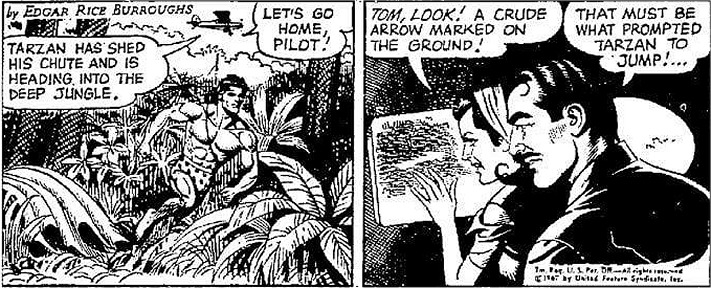
FALSE CONFESSION
October 18: On this day in 1877 actor Jules Cowles, who appeared in the first motion picture based on an Edgar Rice Burroughs novel, “The Oakdale Affair” was born in Farmington, Connecticut. His given name was Julius D. Cowles.
His character in “The Oakdale Affair” was Jeb Case. Sadly the film is considered lost. No copy is known to exist. In the novel, Jeb Case is a farmer and the father of Willie Case, the man to whom the "Oskaloosa Kid,” aka Abigail Prim, confessed her “reported” crime. The synopsis of the film is quite similar in this account, except that Abigail is referred to as Gail.
Information about the film may be found at: https://www.erbzine.com/mag7/0765a.html
His film career was relatively brief but prolific, from 1915 through 1934. He played the Beadle in two versions of “The Scarlet Letter,” once in 1926 and again in 1934. A beadle is a church official who assists the minister. Among his 100+ films are “The Lost World” (he played Zambo) and “The Were-Tiger”
The drabble for today is “False Confession,” and it was inspired the encounter of Gail Prim and the Case family.
FALSE CONFESSION
![]()
Willie told his father, Jeb. “Found him in the barn. Claims to be the notorious Oskaloosa Kid.”
“That right?” asked Jed.
“You bet. I’m a second story man. I need a hideout. Robbed the Prim the family just t’other day”
How’d you get inside?”
“Climbed the lattice. Jimmied the window.”
Jeb examined her manicured hands and smiled. “Saying you did when you didn’t just like saying you didn’t when you did. Best you go home young lady before more trouble finds you.”
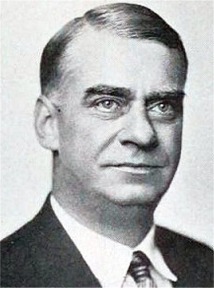
CONSEQUENCES
October 19: On this day in 1928, Louis Scheimer, who voiced Nkima in 36 episodes of the animated “Tarzan Lord of the Jungle," was born in 1928.
Robert Ridgely was Tarzan and Linda Gary was Jane. Danton Burroughs performed the Tarzan yell. "For episode information and other details about the animated “Tarzan Lord of the Jungle,” follow this link: https://www.erbzine.com/mag27/2799.html
Lou was not only a voice actor, he was a producer and one of the founders of Filmation and the executive producer of many Filmation cartoons.
It is claimed that Scheimer’s family had to flee Germany after his father punched out Adolf Hitler in 1921 or 1922.
It is said that Lou performed so many voices because Filmation only hired three actors per episode and Lou performed all the other male voices. Additionally, under the name Erika Lane, he wrote the music score for He-Man and the Masters of the Universe.”
Besides playing Nkima, Tarzan’s monkey, he voiced characters in “Jason of Star Command,” “Space Academy,” The Ghost Busters,” “The New Adventures of Gilligan,” and voiced Bat-Mite, Clayface, and the Bat Computer on “The New Adventures of Batman.” The list seems almost endless.
The drabble for today is “Consequences,” and it was inspired by Scheimer’s father’s encounter with a young Adolf Hitler.
CONSEQUENCES
![]()
“Not me, my dad. If he’d have known who Hitler would become, he’d have done more than just hit him.”
“So he didn’t know who Hitler was?”
“He knew his name was Adolf Hitler, but in 1921 Hitler was just another ill-mannered jerk in a cabaret.”
“Then why’d he hit him?”
“He was rude and cut in line. He called Dad some filthy names and knocked his beer from his hands. He shoved Dad and Dad punched him. Bad behavior should always have consequences.”
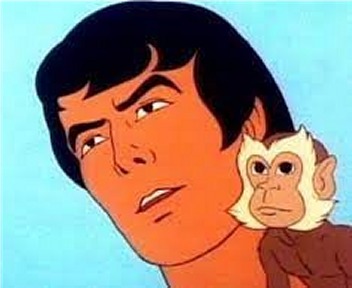
JACK ATTACK
October 20: On this day in 2002, character actor Jack Elam died in Ashland, Oregon at age 82. Among his many film and television roles, on the Ron Ely television series episode, “The Circus,” Elam played Bellak, who owned a small circus in partnership with Ilona, played by Sally Kellerman. The two became suspicious of a new member and sought help from Tarzan. The cast also included the infamous film heavy, Leo Gordon, and Chips Rafferty. Many feature films wish they had that good a cast.
For details about all the Ron Ely television Tarzan, start at: https://www.erbzine.com/mag74/7420.html
The drabble for today includes a few of Elam’s movie quotations. Let’s call it “Jack Attack.”
JACK ATTACK
![]()
“I’m afraid I’ll need more information than that before
I intervene.”
“I overheard him talking to an animal trainer. He
killed a man in Nairobi.”
“You heard him yourself?”
“Yep, I could sneak up on a coyote if I was a mind
to.”
“Then why didn’t you capture him.”
“He’s twice my big and half my ugly. I hates fighting.
I’d hate it even if I lived through it.”

REAP THE WHIRLWIND
October 21: On this day in 1942, Edgar Rice Burroughs, the world’s oldest war correspondent wrote an article for the Honolulu Observer titled “Whatever A Man Soweth.” The article was commentary about Russia’s complaints that the United States wasn’t providing enough war aid to the Soviets. He reminded Russia of its ongoing attempts to interfere in our politics, undermine our government, and overthrow our democracy. This was in 1942, remember. Seems that the more things change, the more they stay the same. Burroughs was clearly unhappy with the Russians, but I doubt that he would have predicted that his article could be considered appropriate today.
The title of the article is from one of the best known scriptures. Galatians 6:7 - “Be not deceived; God is not mocked: for whatsoever a man soweth, that shall he also reap.” Another way to say it is, “Folks get what they deserve, not what they want.”
A summary of the article is available at https://www.erbzine.com/mag0/0001.html...but the entire text of the article is featured in ERBzine at: https://www.erbzine.com/mag11/1128.html#WHATSOEVER%20A%20MAN
I’m not going to produce the entire article here, but it can also be read in its entirety on page 469 of the book, “Edgar Rice Burroughs Tells All.”
REAP THE WHIRLWIND
![]()
“We don’t forget that for a quarter century Russia tried to undermine and overthrow our government. Every American knows behind the skirts of the Communist Party, the Russian Government is doing those things.
If we were convinced Russia would always be our ally and wouldn’t again interfere in our politics, we’d redouble our efforts to aid her, but deep in the fiber of our being is suspicion and distrust of the Russia Government. It’s nothing of our own doing. The Russians, sowing deep for a quarter century, planted it there.
Whatsoever a man soweth, that shall he also reap.”
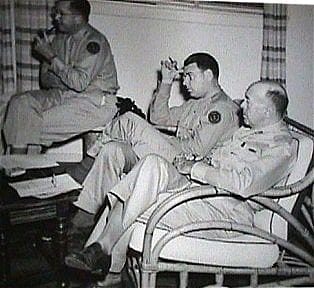
YO-HO-HO
October 22: On this day in 1932, Argosy Weekly published the sixth and final installment of “Pirates of Venus.” Only the first issue had a cover dedicated to the story and it was drawn by Paul Stahr. Samuel Cahan drew one interior black and white illustration for each issue. The cover for this issue was drawn by Robert A. Grael and it illustrated the first episode of “Burn, Witch, Burn! By A. Merritt - a pretty good tale in its own right.
Other contributors to the issue inclued, George Allan England (Vikings of the North) and Sookie Allen (Men of Daring: Jean Lafitte.)
The drabble for today, “Yo-Ho-Ho,” was inspired by “Pirates of Venus,” and would be pirates everywhere.
YO-HO-HO
![]()
Now the Captain of a ship on another planet, Carson realized the position he was in. He smelled the tang of salt in the morning breeze beneath the clouded sky. His co-conspirators cheered him and waited for his orders. His weapons were sharp and he knew where to find the woman he loved.
“Life’s pretty good,” he thought. Why wouldn’t it be, I’m a pirate. Always wanted to be a pirate, but I never could get my ship together.”
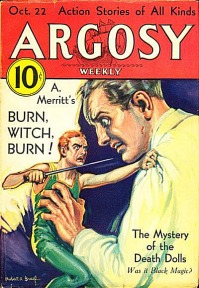
RETURN ON INVESTMENT
October 23: On this day in 1992, actress Dorothy Dunbar, who portrayed Jane alongside James Pierce’s Tarzan in “Tarzan and the Golden Lion, died at age 90 in Seattle, Washington.
Born as Edith Augusta Dunbar in Cripple Creek, Colorado, Dorothy appeared in silent movies during the 1920s, including “The Flaming Cross,” “The Masquerade Bandit,” and "Breed of the Sea.” She retired from films when she married her second husband, “Thomas Buckin Wells II. Boxer/actor Max Baer was among her seven husbands. Outside of the information about her brief acting career (Playing Jane was the highpoint) and her seven husbands, there is very little information about her. She wrote a book of poetry, but never submitted it, and was considered a better than average bridge player and golfer.
A wealth of information about the film, “Tarzan and the Golden Lion,” is available at https://www.erbzine.com/mag5/0591.html
The 100 word drabble for today is “Return on Investment,” and it was inspired by Dorothy Dunbar, her seven marriages, and the film “Tarzan and the Golden Lion.”
RETURN ON INVESTMENT
![]()
“He’s just like a real life husband. Most of the time he’ll be running around with his jungle buddies chasing princesses, queens, and priestesses from some lost civilization or another. ”
“He’s your husband. Pretend you love him.”
“I can do that. Pretending seems like a skill that
will serve me well in real life, but sometimes I wish I could get a refund
on the time I’ve invested in men that weren’t worth it.”

PARTS IS PARTS
October 24: On this day in 1940, Edgar Rice Burroughs began writing “Beyond the Farthest Star.” Edgar Rice Burroughs Inc. released the ‘restored version’ of the adventures of an earthman on Poloda earlier this month. The new volume includes “Return of Tangor,” and features the Frank Frazetta painting used for the Ace Books publication.
The restored version is as Burroughs wrote it and includes words and passages excised from the original manuscript by the editors at Blue Book Magazine. Among the items deleted were any references to the Kapar (a warmongering race) practice of processing the opposition soldiers for food. Imagine the World War One song that would have generated. I can hear the Peerless Quartet singing, “I didn’t raise my boy to be a sandwich!”
Visit the website, ERBzine, for publishing details. https://www.erbzine.com/mag8/0862.html
The drabble for today is “Parts is Parts,” and it was inspired by the cannibalistic behavior of the Kapars in “Beyond the Farthest Star.” Credit goes to lyricist Alfred Byran and composer Al Piantadosi – with and honorable mention to “The Peerless Quartet.” I expect the following parody of the Song, “I Didn’t Raise My Boy to be a Soldier,” will be considered in very poor taste by many people. If that’s the case, you need to add more salt and a pinch of pepper.
PARTS IS PARTS
![]()
Ten million soldiers have gone to war
Who may never return again
Mother’s backs must feel as lashed
For boys served in ghoulish hash.
A mother murmured thru’ her tears:
I didn’t raise my boy to be a sandwich.
I brought him up to be my pride and joy.
Who dares to serve him in a casserole
To feed some other mother’s darling boy?
Let them eat corn, or beans, or even cake,
Let oats and wheat their hunger slake
There’d be no boys cooked today
If mothers everywhere would say,
“I didn’t raise my boy to be a sandwich!”
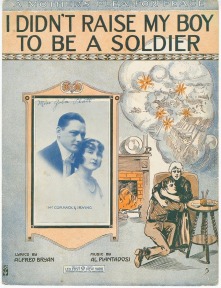
SURVIVE
October 25: On this day in 1941, Edgar Rice Burroughs wrote the first words to “Skeleton Men of Jupiter,” the first installment of his planned eleventh John Carter novel. He never wrote another installment.
The story was rejected by Blue Book Magazine, but accepted and published by Amazing Stories in February 1943 with a cover and two interior illustrations by J. Allen St. John. The story was reprinted in Amazing Stories Quarterly in the fall 1943 issue with a new cover by Malcolm Smith and Julian S, Krupa. The J. Allen St. John issue is reminiscent of a scene from a Ray Harryhausen film or maybe the inspiration for it.
The tale did not appear in book form until July 24, 1964 when Canaveral Press combined it with “John Carter and the Giant of Mars,” to make up the volume titled, “John Carter of Mars.” Ballantine produced. Robert B. Zeuschner lists 34 publications of the story in “Edgar Rice Burroughs: The Bibliography” including several editions of “John Carter of Mars” and independent appearances of ‘Skeleton Men” in various anthologies. Jimmie Goodwin identifies 22variants of “John Carter of Mars” published by Ballantine in his “Edgar Rice Burroughs: The Descriptive Bibliography of the Ace and Ballantine/Del Rey Paperback Books.”
If you’d like to know more, go to https://www.erbzine.com/mag7/0739.html
One comment about the story. John Carter is able to leap about on Mars because of lower gravity and Burroughs gives him the same abilities on gigantic Jupiter because of the rapid planetary rotation. Okay then.
The drabble for today is “Survive.” It was inspired by one scene in “Skeleton Men,” where Dejah Thoris tells John Carter, “Courage, better death than dishonor.”
SURVIVE
![]()
Carter shook his head. “Decieving our enemies is better than death. We have children and grandchildren. There is no dishonor is surviving to fight again another day.”
“John, revenge is a soul consuming goal.”
“I speak not of revenge. I speak victory. He who is
dead cannot fight and he who cannot fight cannot win. We still live. To
willingly die is to surrender. Never give up and never surrender.”
AGING GRACEFULLY
October 26: On this day in 1972, Gene Wolfe completed writing the story, “Tarzan of the Grapes.” The story was originally published in June 1972 issue of “The Magazine of Fantasy and Science Fiction” and was included in the anthology “Mother Was A Lovely Beast” collected by Philip Jose Farmer.
Gene Wolfe, a Grandmaster of Science Fiction, lived his later years in Peoria, Illinois, the hometown of Philip Jose Farmer. His Solar Cycle series of novels was influential on several writers. Before becoming a full-time writer, Gene was credited with helping to develop the machine that makes Pringle’s potato chips.
“Tarzan of the Grapes” tells the tale of a sheriff and his deputies searching for an aging Tarzan hiding in a vineyard. They can’t believe that the alleged Lord of Jungle is still alive and virile after so many years. They eventually capture the ape man, but (spoiler alert) the story ends with the ageless ape man breaking his handcuffs. Sheriff, you better watch out.
The drabble for today is "Aging Gracefully,” and it was inspired by “Tarzan of the Grapes.”
AGING GRACEFULLY
![]()
“The sheriff nodded. “He’s not hiding, he’s lying in wait.”
“He’s like what, a hundred years old. How is that possible?”
“All I know is that the owners spotted him wearing a loincloth. He has a knife.”
“A hundred year old dude with a knife. I’m so worried. I sent Phil to the other side of the vineyard. Maybe he’ll find him.”
The air was pierced by a panicked scream and then the victory cry of the bull ape. The sheriff said, “No, I think Tarzan found him first.”

SILENT INVESTOR
October 27: On this day in 1981, actor John Warburton died in Sherman Oaks, California. Warburton played Carl Marley in the 1947 film, “Tarzan and the Huntress.” The film starred Johnny Weissmuller, Brenda Joyce, and in his final appearance as Boy, Johnny Sheffield.
Warburton’s character, Carl Marley was the financial backer of a big-game huntress named Tanya Rawlins (Patricia Morison) and accompanies her on a safari to capture male and female animals for zoos in America. They become embroiled in a plot overthrow the ruler, King Farrod, who has given permission to for the hunters to take animals from his country. Tarzan calls all the animals across the river to another land and uses a herd of elephants (always a herd of elephants) to defeat the revolution and drive the huntress and her companions from Africa.
For more details about the film, go to https://www.erbzine.com/mag6/0627.html
Warburton was active from 1932 to 1978 and his films included “King Rat,” “Funny Girl,” “Charlie Chan’s Greatest Case.” And “A Study in Scarlet.” He played “Centurion” in the Star Trek episode, “Balance of Terror” in 1966.
In private life, Warburton was married five times and in 1933 suffered a severe beating in retaliation for his alleged beating of actress Alice White. White and her fiancée, Sidney Bartlett, were accused of arranging the beating. She claimed that Warburton had ended his affair with her by beating her so badly she required cosmetic surgery. A grand jury declined to prosecute White or Barton, but the bad publicity ended her career.
Today’s drabble, “Silent Investor,” was loosely inspired by Warburton’s role in Tarzan and the Huntress.”
SILENT INVESTOR
![]()
“I don’t understand, Patricia."
“I know about you, Mr. Warbucks. You made a fortune
during the wars. That’s you, right?”
“My name’s ‘Warburton.’ Warbucks isn’t real, he’s
a character in the “Little Orphan Annie” comic strip.”
Patricia fluttered her eyelashes. “You don’t want
people to know you’re a war profiteer. I’ll keep your secret!”
“I’ve never been taken for a billionaire before. To
quote another comic strip, “I yam what I yam and that’s all that I yam.”

HERE COMES THE SUN
October 28: On this day in 1930, Edgar Rice Burroughs began a story about a young Tarzan. Let’s call the unfinished 1,170 word fragment, “Young Tarzan Ponders.” Bill Hillman transcribed the hand scrawled document in 2005. Working with Danton Burroughs, he planned to send the fragment to a number of authors, each of whom would write the rest of the story. Their combined works would be edited into a book. The project was put on hold after Danton passed away.
One such writer, Michael Tierney, did complete the story and his work was featured in Cirsova Magazine in Spring 2019 under the title, “Young Tarzan and the Mysterious She.” Copies are available in paperback and electronically from Amazon.
Bill Hillman talks about his work on the fragment at https://www.erbzine.com/mag74/7401.html
I considered making the drabble for today a frabble. (a funny drabble with credit to my childhood friend, Kent Neely, for coining the term, frabble) The frabble would be about young Tarzan attempting to learn about the mysterious she, but ultimately learning that all shes are mysterious to men. As the scientist Stephen Hawking said, “Women. They are a complete mystery.”
Instead the 100 word drabble for today is the first 100 words of the fragment written by ERB in 1930 – assuming that ERB’s words used in the ERB/ Michael Tierney story made it to publication as written. The title is “Here Comes The Sun.” I’m pretty sure someone else may have used that title before.
HERE COMES THE SUN
![]()
“To the likeness of Sheeta, the leopard, Kudu mottled
the bronzed skin of a naked youth sitting at the foot of a hoary patriarch
of the forest…
HOME FROM THE SEA
October 29: On this day in 1945, Edgar Rice Burroughs wrote another letter to a friend he’d made in Australia, Thelma Terry, not to be confused with the jazz bandleader who formed the band, Thelma Terry and the Playboys in the 1920s. Our Thelma Terry was a ‘nice girl’ from Sydney, Australia who ERB met while on Christmas leave in 1942/1943. The two corresponded until May of 1947. Burroughs closed his letter dated October 29, 1945 with the wish that the two of them might get back together. They never did.
Copies of correspondence between the two are available at: https://www.erbzine.com/mag10/1027.html
I chose the image that I used with this brief article because while ERB, the world’s oldest war correspondent, wasn’t a sailor, most of his time during WW2 was in the Pacific Theater and he spent a great deal of time on Navy ships.
The text of the letter dated October 29, 1945 follows is today’s drabble, “Home From the Sea.”
HOME FROM THE SEA
![]()
“Was glad to read what you wrote about the American boys. I think that everywhere they’ve been more popular with the girls than they have with the men. I remember one night when a taxi driver wouldn't take us on board because of Ham. He wouldn't drive an American. Probably some G.I. got his girl.
“It was nice to hear from you, Terry. I hope that someday we may get together and talk over our good times in Sydney.”

IMPOSSIBLE DREAM
October 30: On this day in 1967, actor Charles Silas Richard Trowbridge (Charles Trowbridge) died in Los Angeles, California. Trowbridge appeared in 233 films between 1915 and 1958 including, “Tarzan and the Huntress,” in which he played King Farrod.
In the film, King Farrod gabe permission for an Amerian safari to capture animals for zoos. Farrod’s nephew plotted to murder the king. Tarzan saved the animals from capture and with a herd of elephant defeated the revolution. Everyone lived happily ever-after, except the bad guys.
Details about the film: https://www.erbzine.com/mag6/0627.html
A few of his other films were ‘A Day at the Races,” “The Robin Hood of El Dorado,” “The Devil is a Sissy,” “Bell Starr,” “Sergeant York,” “After the Thin Man,” “Captains Courageous,” “Captain America,” the serial, and “The Secret Life of Walter Mitty,” His last film, fittingly enough, was “The Last Hurrah” in 1958.
Trowbridge, the son of an American diplomat was born in Veracruz, Mexico and he briefly ran a coffee plantation in Hawaii. Educated at Stanford, he gave up a thriving career as an architect to become an actor.
The drabble for today, “Impossible Dream,” was inspired by Trowbridge’s career change.
IMPOSSIBLE DREAM
![]()
“I was pretty good, but I was bored. Life was passing me by.”
“So you became an actor.”
“I’ve been kings, presidents, judges, generals, explorers, sea captains, and pilots. I fought mummies and monsters. I loved fair maidens and died glorious deaths.”
“Sounds like the Secret Life of Walter Mitty.”
“I was in that film and Walter was my hero. He said,
“To see the world, things dangerous to come to, to see behind walls, draw
closer, to find each other, and to feel. That is the purpose of life.”
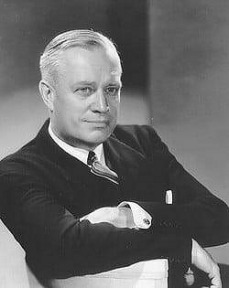
BRAVERY ISN'T EASY
October 31: On this day in 1970, actor Steve Hawkes (Stjepan Šipek) and actress Kitty Swan (Kristen Svanholm) were badly burned while filming the movie, “Tarzan and the Brown Prince." Also titled ‘Tarzan at the Rainbow, Filming was in Rainbow Springs, Florida. Hawkes and Swan were tied up for a scene and spilled fuel caught fire during the planned pyrotechnics. The fire spread quickly, the actors struggled, and the film crew panicked. Reportedly a lion, who was trained to untie ropes, sustained burns over 90 % of his body while pulling Hawkes from the fire. Kitty had burns over a quarter of her facial and bodily skin, although Steve got off more lightly. Kitty was transferred to the best American clinic for treating burns. She never made another film.
The drabble for today is “Bravery Isn’t Easy.” It’s difficult to write about a tragedy without seeming heartless or maudlin. I decided to focus on the lion.
BRAVERY ISN'T EASY
![]()
Numa ripped his bonds from their anchors and bravely
charged into the flames.
He gently but quickly dragged his man to safety. He
tried to return for the female, but his flaming mane and singed fur were
too painful. He crawled, but the men restrained him while others saved
the woman.
One worker said, “Steve, I’m amazed the lion pulled
you from the fire.”
Hawkes replied, “So am I, but now I understand why
lions are called the king of beasts.
